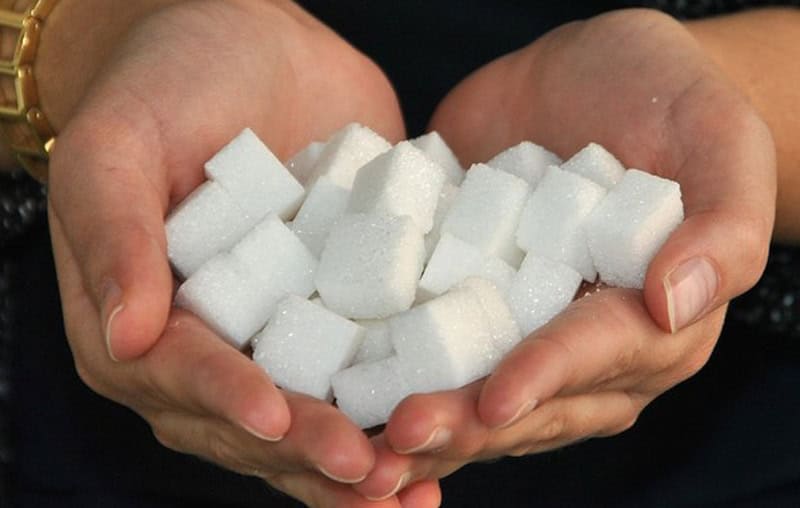Many individuals wonder if beet sugar vs cane sugar makes a difference in overall health.
Discover the Uses and Conveniences of Beet Sugar Vs Cane Sugar in Your Daily Diet
Checking out the unique high qualities of beet and cane sugar discloses greater than just their sweetening capacities; it highlights their unique influence on health and wellness and cooking arts. Beet sugar, known for its refined taste, is frequently favored in delicate treats, whereas cane sugar, with its hint of molasses, adds richness to durable meals. Each kind holds its very own nutritional account and glycemic ramifications, inviting a much deeper understanding of their functions in a balanced diet and sustainable usage techniques.
Origin and Production Processes of Beet and Cane Sugar

The unique climates and soil kinds required for growing sugar beets and sugarcane add to distinctions in their cultivation techniques and geographic circulation, influencing the economics and sustainability of their production. beet sugar vs cane sugar.
Nutritional Contrast In Between Beet Sugar and Cane Sugar
Despite stemming from different plants, beet sugar and cane sugar are nutritionally really similar, both mainly containing sucrose. Each gives about 4 calories per gram, converting to about 16 calories per tsp. Structurally, both sugars are made up of about 99.95% sucrose, with very little quantities of various other substances like dampness and trace element, which do not dramatically modify their nutritional accounts.

Ultimately, when picking in between beet sugar and cane sugar based upon dietary material alone, both deal similar benefits and disadvantages as they are essentially types of the same particle-- sucrose, offering fast energy without various other nutrients.
Effect On Health: Glycemic Index and Caloric Material
Discovering better into the results of beet sugar and cane sugar on health, it is important to consider their glycemic index and caloric content. Both sugars are identified as sucrose, which is composed of glucose and fructose. This make-up leads them to have a similar influence on blood sugar level degrees. The glycemic index (GI) of both beet and cane sugar is around 65, categorizing them as high-GI foods, which can create quick spikes in blood sugar levels. This is a critical element for individuals managing diabetes mellitus or those attempting to stabilize their power levels throughout the day.
Each kind of sugar includes around 4 calories per gram, making their caloric material matching. For those keeping an eye on calorie intake, specifically when handling weight or metabolic health conditions, understanding this equivalence is vital (beet sugar vs cane sugar). Nonetheless, too much consumption of any kind of high-calorie, high-GI food can contribute to health and wellness issues such as excessive weight, heart problem, and insulin resistance.
Environmental and Economic Considerations of Sugar Manufacturing
Beyond health and wellness impacts, the manufacturing of beet and cane sugar likewise elevates considerable ecological and financial concerns. Sugar beet cultivation often tends to call for cooler check that environments and has a reduced geographical impact compared to sugar cane, which prospers in tropical regions. Both crops are intensive in terms of water use and land profession, possibly leading to deforestation and water deficiency. Financially, the global sugar market is extremely unstable, affected by adjustments in worldwide trade policies and aids. Many countries incentivize sugar production via financial backing, skewing market value and impacting small-scale farmers adversely.
Additionally, the use of pesticides and fertilizers in both beet and cane sugar i loved this growing can lead to dirt destruction and contamination, further affecting biodiversity and local water bodies (beet sugar vs cane sugar). The selection in between growing sugar beet or cane commonly pivots on regional environmental conditions and financial variables, making the sustainability of sugar manufacturing a complex issue
Culinary Applications and Taste Distinctions
While the environmental and financial elements of sugar manufacturing are without a doubt considerable, the option between beet and cane sugar likewise affects culinary applications and flavor accounts. Beet sugar, derived from the sugar beet plant, is understood for its extremely neutral taste.
Walking cane sugar, drawn out from sugarcane, typically maintains molasses traces, which give an unique richness and deepness. This useful reference slight molasses taste enhances the complexity of baked items, sauces, and marinates. It is especially preferred in items where a caramel undertone is preferred, such as in brownies or gingerbread. The small variation in dampness material between beet and cane sugar can affect the structure and consistency of dishes, making cane sugar a favored choice for certain recipes that profit from its special buildings.

Verdict
To conclude, both beet and cane sugar have distinct beginnings and production procedures, using similar nutritional profiles with minor differences in sodium material and taste. While their effect on health, especially pertaining to glycemic index and calories, is equivalent, the selection in between them usually steams down to environmental, financial variables, and certain culinary demands. Comprehending these aspects can lead customers in making informed choices that line up with their health objectives and taste choices.